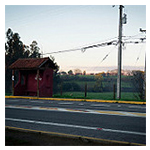 The FCC released an order adopted last week detailing plans to make an additional $540 million available to rural telecom providers to help cover the costs of deploying broadband to areas that are costly to serve and where minimum-speed broadband is not available.
The FCC released an order adopted last week detailing plans to make an additional $540 million available to rural telecom providers to help cover the costs of deploying broadband to areas that are costly to serve and where minimum-speed broadband is not available.
The FCC also detailed adjustments that will be made to how carriers receiving funding will be reimbursed, including the types of costs that can be recovered through the Universal Service Fund (USF) program.
Additionally, the commission issued a notice of proposed rulemaking (NPRM) that seeks to “establish a budget that will allow for robust broadband deployment in rate-of-return areas while minimizing the burden that contributions to the [USF] place on ratepayers and to bring greater certainty and stability to rate-of-return high-cost funding, both in the near term and in the future.”
New USF Rural Broadband Funding
The newly authorized USF funding includes $360 million for carriers that elected support based on a cost model known as the alternative Connect America model (A-CAM) and $180 million for carriers that elected to remain on the traditional Universal Service Fund (USF) high-cost program – a group the FCC calls “legacy carriers.” Carriers receiving both types of funding saw a drop last year in the anticipated amount of support they would receive as the result of a budget shortfall, and deployment targets were cut back accordingly.
The shortfall for A-CAM carriers is as much as $110 million annually for the 10-year program, and NTCA – The Rural Broadband Association has estimated the shortfall for legacy carriers at up to $100 million annually.
But although the $540 million that the FCC authorized today falls short of the estimated amounts needed to fully fund high-cost USF, NTCA issued a statement about the latest FCC action that was generally favorable. While noting that the association was still reviewing details, NTCA CEO Shirley Bloomfield said the FCC’s latest action “to address immediate USF budget crises represents a much-needed ‘shot in the arm’ for rural broadband and charts a course toward realizing the goal of promoting and sustaining effective broadband deployment in rural America.”
Jonathan Spalter, CEO of USTelecom, which also has urged additional USF high-cost funding, called the FCC’s action “another significant and meaningful step toward closing the rural broadband gap.” He added that “[b]y increasing funding and putting in place tighter controls on expenditures, the commission is reinforcing its number one priority — closing the digital divide.”
Moving Forward
In scanning through the 110-page order and NPRM, I didn’t see an explanation of where the new $540 million would come from, but when FCC Chairman Ajit Pai earlier this year proposed additional USF high-cost funding, a commission spokesperson told Telecompetitor that funding would come, in part, from reserves. The spokesperson also noted at that time that the commission would seek input on the USF budget and, indeed, the NPRM seeks such comment.
Specific areas on which the NPRM seeks comment, among others, include:
- Fully funding carriers who elected A-CAM funding
- A possible new model-based support offer
- Establishing a threshold level of support for legacy carriers that would not be subject to the budget control mechanisms that have introduced considerable uncertainty into the USF program, thereby acting as a brake on investment
- A revised approach to deployment obligations
In a statement about the order and NPRM, FCC Commissioner Michael O’Rielly pitched another possibility that he has previously suggested – potentially reducing the size of other parts of the USF program to help fund the high-cost program.
“I have consistently urged the commission to set a topline budget for the entire federal [USF] . . . and, if necessary, make some hard choices about the relative sizes of each of its programs,” said O’Rielly. Other programs include the e-rate schools and libraries program, the rural healthcare program and the low-income Lifeline program.
FCC Commissioner Mignon Clyburn argued against O’Rielly’s suggestion in her comments. “Since we are spending more money on our high-cost fund, why not include language which makes it clear that we would not raid the budgets of other programs in order to pay for these reforms?” she asked. She noted, however, that her request to include such language was turned down.
Image courtesy of flickr user María de los Angeles Quiroz.


